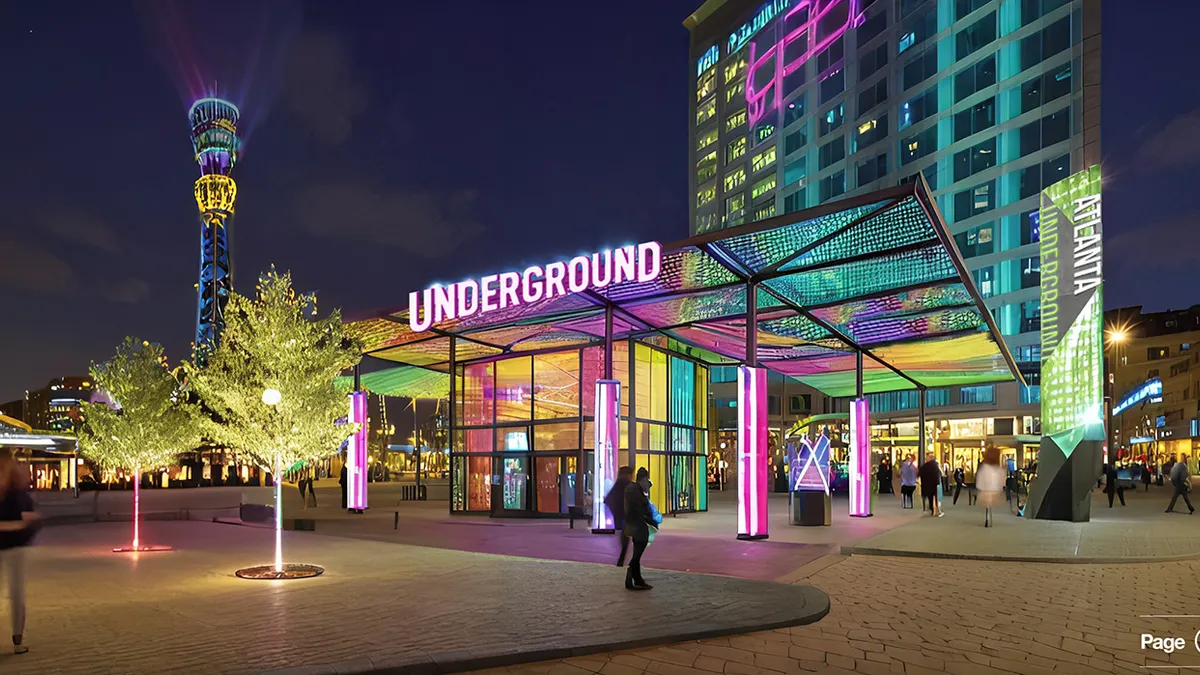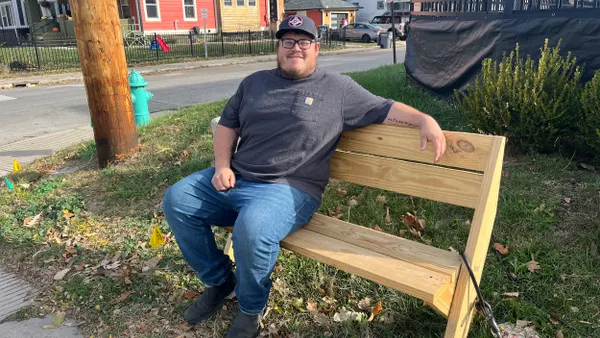Signs for Underground Atlanta are the first thing subway riders see when they emerge from the east exit of the Five Points subway station onto a downtown Atlanta street.
The four-block area has a storied history. Originally a Reconstruction-era railroad hub, the area morphed into a commercial district in the 1920s when city leaders built viaducts over the train tracks and shops opened on the second level of the commercial buildings above the rail traffic. In the 1960s, the lower level became a nightlife destination, and in the 1980s, a shopping mall. It served as a hub for the 1996 Olympic Games, then struggled to attract patrons for many years. Purchased by local real estate developer Shaneel Lalani in 2020, the historic district is in the midst of yet another transformation into an arts and entertainment hub.
As Atlanta prepares to welcome visitors to the 2026 FIFA World Cup, which will be held at Mercedes-Benz Stadium less than a mile away, Lalani and city leaders are making improvements designed to welcome and guide millions of international visitors through downtown, laying the foundation for a civic infrastructure they hope will serve Atlanta long after the soccer fans have returned home.
“The city administration has been very focused on making preparations for a lot more international travelers and an influx of guests and visitors, people who aren’t familiar with downtown Atlanta,” said Anne Michael Sustman, director of commercial mixed use and adaptive reuse for Page, an architecture and engineering firm that Stantec acquired this year.
Underground Atlanta commissioned Page to prepare for that influx by studying how to improve the space’s appeal as a walkable destination with universal wayfinding interventions and a reimagined streetscape, Sustman said.
“There has been a big push by the city to really improve the pedestrian experience throughout downtown Atlanta,” Sustman said. The Underground Atlanta owners believe “long-term sustainability relies on a constant presence of patrons for the businesses there,” she said.
Catalyst for revitalization
Underground Atlanta’s retail spaces were mostly vacant when Lalani bought it, Sustman said. The developer found art galleries and music venues to fill the spaces under the street. “Now they have this incredibly vibrant nightlife, with over 700 shows a year, but they realized that they needed more activation at the street level,” she said.
Page’s design features streetscape and lighting improvements, as well as greenery, to make the area feel safer and more accessible to people during the day. Pedestrian pathways are wide enough for food trucks and emergency vehicles but are designed to prevent vehicles from driving into a crowd of pedestrians at a high speed, Sustman said. The city has made two blocks of the main thoroughfare, Upper Alabama Street, pedestrian-only and plans to do so for a portion of Pryor Street, which intersects it, as well.
Several buildings are being retrofitted to maintain the area’s authenticity and “keep it gritty,” said Phuong Nguyen, Page’s experiential graphic design director. “We want small-business owners to be able to afford these spaces, so we’re starting with a light touch that reuses spaces — the most sustainable type of building.”
At the intersection of Pryor and Upper Alabama, the Antebellum-era Macon & Western Railway building — most recently a Foot Locker and a gallery space — is being adapted for reuse as a 7,000-square-foot “micro” food hall that will house local restaurant startups offering affordable lunch options, Sustman said.
Beyond welcoming tourists, Sustman said, the project’s core goal is to support the city’s push to bring more housing and residents downtown. Many Atlantans haven’t visited the downtown area since Atlanta hosted the 1996 Olympic Games, she said.
“It’s not just the World Cup that is creating that momentum and that catalyst — although it’s a really good excuse for the city to come in and help out in some ways,” she said. “The city has an awareness that we’re not just on display for visitors, but we’re on display for people who could really be the catalyst for total change and transformation and revitalization of our downtown.”












